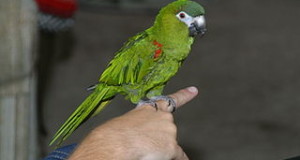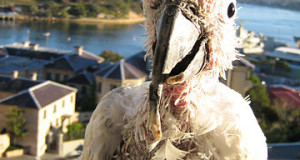Please see Part I of this article for information concerning lice and mites.
Fleas
Although usually associated with mammals, fleas do afflict birds, and, in fact, they are quite common on poultry farms. Thankfully, however, fleas are rarely encountered in private bird collections.
A close inspection of an afflicted bird will reveal fleas as tiny, dark, shiny dots. Unfortunately, they are not choosy as their hosts, and so readily move onto people and other pets. Ivermectin (dispensed by a veterinarian) is the most effective treatment.
Wash well with warm water and anti-bacterial soap after handling a bird upon which you have discovered fleas, and launder your clothes in hot water… a professional exterminator and your doctor can provide advice concerning fleas which may have become established on your person or in your home.
Moths
Although they are not parasitic, a number of moth species are attracted to stored bird foods, or may arrive as caterpillars or eggs within the food. Once well established, they can be difficult to eradicate, and may also set up home in cereals, cookies, dry dog food, bread crumbs and similar foods.
The Springstar Flour Moth Trap is designed to eliminate the most commonly encountered species, collectively referred to as “flour moths” (Indian meal moths, Mediterranean flour moths, almond moths and raison moths), without the use of pesticides. Female moth pheromones (chemical secretions used to attract males) lure male moths into the trap, where they are held for easy disposal.
Ants
Ants are often drawn to bird cages by the presence of fruit and droppings. While most are merely pests, in the southern half of the USA the introduced fire ant may attack and kill caged pets, especially chicks and debilitated birds. Please see my article, Bird Safe Ant Control for further information.
Further Reading
A University of New Hampshire article on the life cycle and control of avian external parasites is posted at http://extension.unh.edu/Agric/Docs/exparasites.pdf
 That Bird Blog – Bird Care and History for Pet Birds
That Bird Blog – Bird Care and History for Pet Birds




One comment
Pingback: Pages tagged "moths"